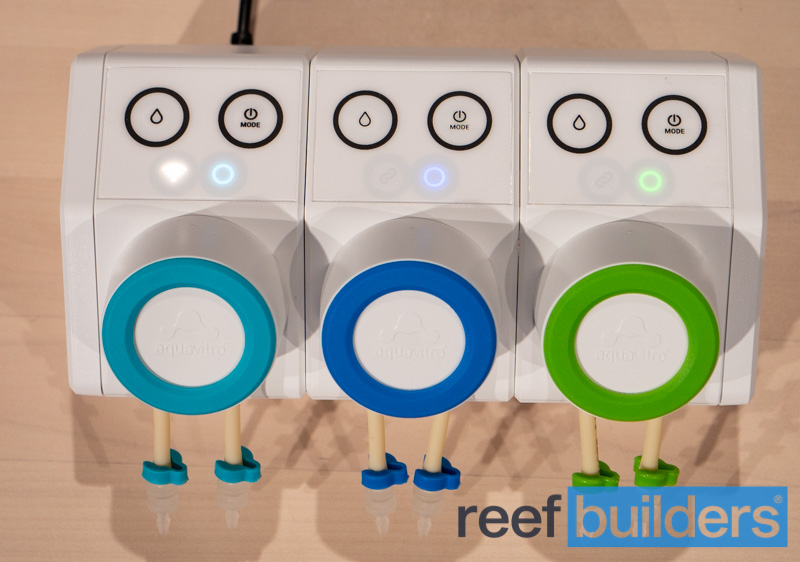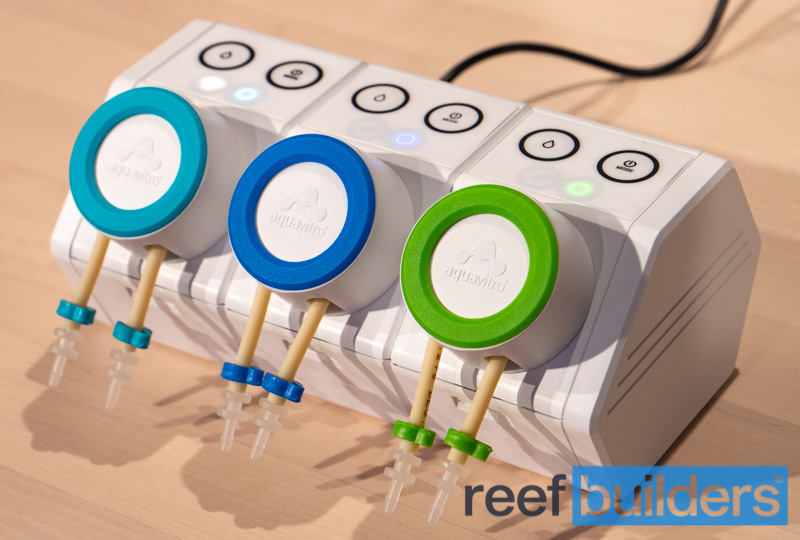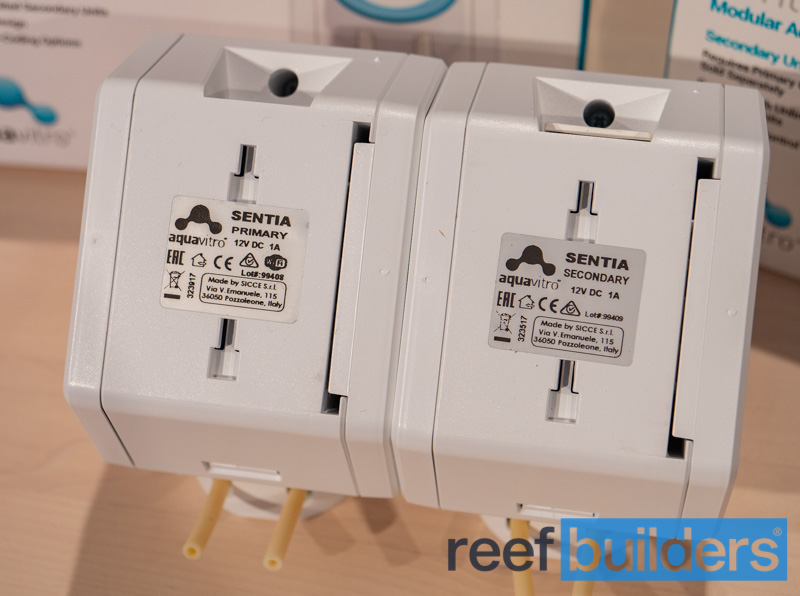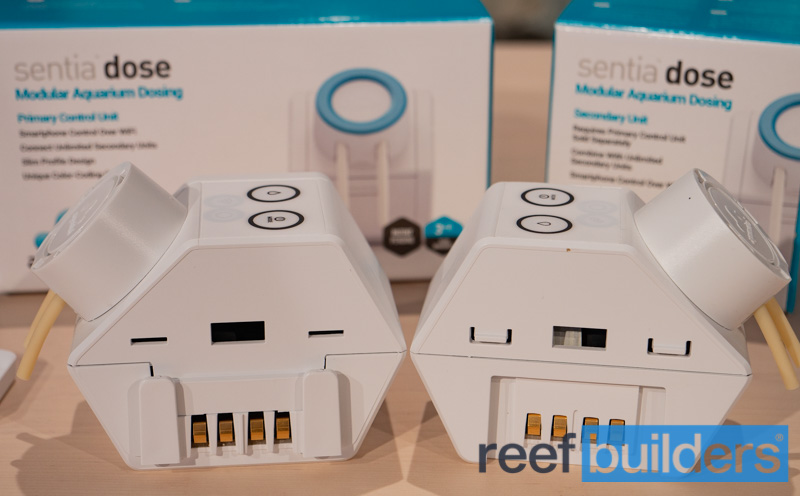It’s been over a year and a half since Seachem first introduced their new dosing pump system and after a healthy wait we’ve finally gotten our hands on the Aquavitro Sentia. This new dosing pump has an interesting design which performs all the major functions we come to expect from smart dosing system but with a few unique tricks that are sure to appeal to many aquarists.
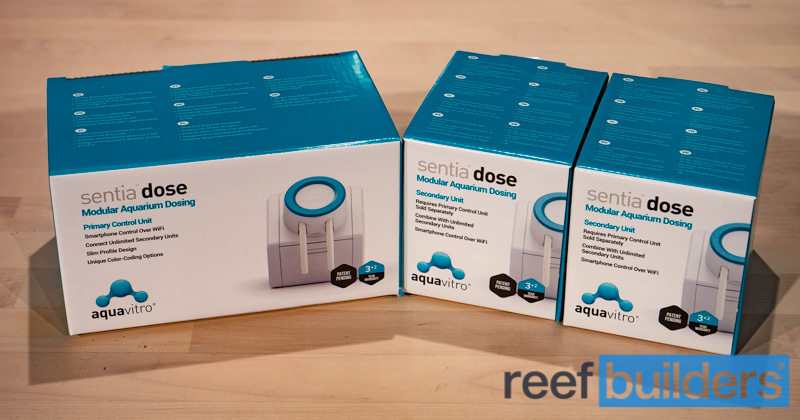
On the surface the Aquavitro Sentia is roughly the same size as other single channel dosing pumps but it has a distinctive polygonal profile which positions the buttons on the top and the peristaltic head at roughly a thirty degree angle. Each Sentia dosing pump ships with an assortment of colored rings which snap into place on the pump head so you can assign a color to each doser for easier association with each channel, its programming, and what supplement it’s adding to your tank.

Small faceplates clip into each side of the Sentia and removing them reveals a series of four contacts to enable the side-by-side connectivity to transfer power, control and programming from the primary doser to all others in the series. Not that it affects the way it works but we find the original design of the Aquavitro Sentia to be especially attractive and not a device you feel the need to hide in the stand either as a standalone pump or when they combine.
There is no programming of the Sentia via the hardware, it’s all controlled through software but the two aforementioned buttons allow manual priming or resetting wifi and memory. There are two small LEDs beneath the buttons to indicate power, wifi connectivity, and chaining between the primary and secondary dosing pump units.
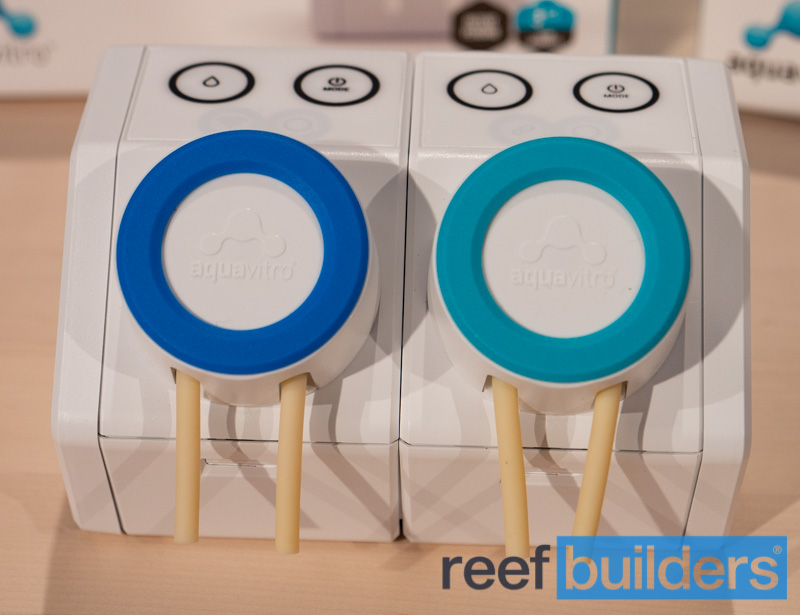
The primary and secondary versions of the Aquavitro Sentia dosing pumps are physically the same size but only the primary doser has the wireless radios necessary for communicating with the Sentia app, and the primary Sentia model also ships with the adapter to supply power to multiple connected secondary units. Opening the housing of the Sentia doser is surprisingly easy and reveals this disparity in wireless radios, as well as the motor driving the peristaltic assembly.
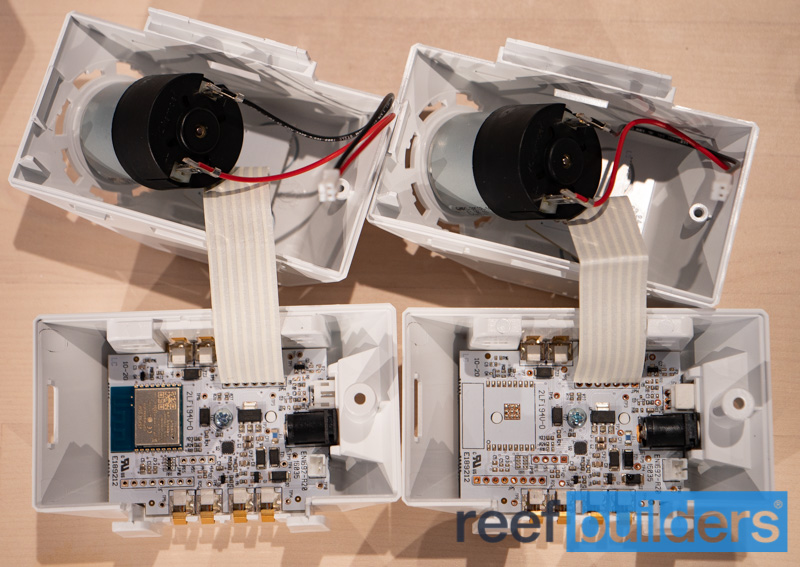
To our pleasant surprise, the Sentia dosing pump uses a beefy dc motor branded by Kamoer which is a well known dosing pump company so we expect this component to be well vetted for dosing pump applications. We dabbled in the connecting the Sentia dosing pump to the Sentia app and discovered that the motor emits a peculiar tone when operating at low and medium speeds but it went away at the higher speed setting.
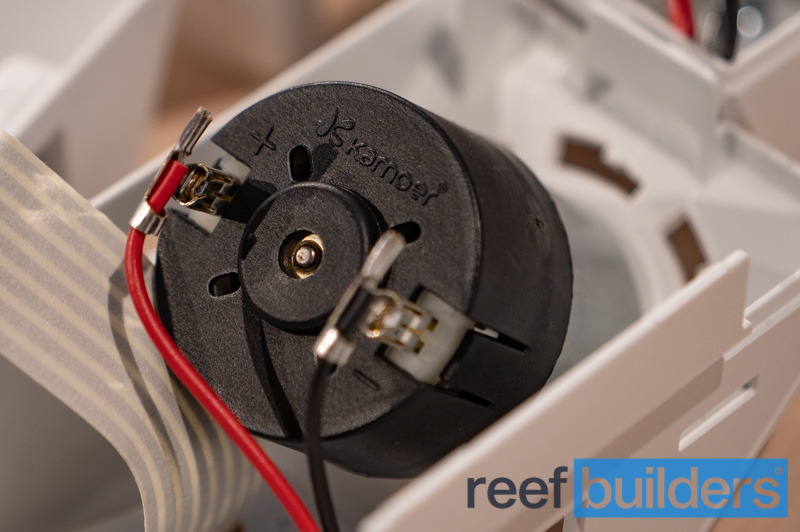
The peristaltic assembly of the Sentia dose is very easily removed for replacement or for refitting with your own new silicone tubing which is very welcome to the DIYers among us. The primary and secondary dosers of the Aquavitro Sentia dose come in separate sized boxes which will be hard to confuse with each other and both ship with an assortment of colored rings, matching colored tubing clips, extra dosing line, a round-bottomed vial for calibration, and a small card with printed QR codes for quickly jumping into the app or product manual.
The Aquavitro Sentia was designed by Seachem and built by Sicce to be laser focused at pure dosing applications so you won’t be using it as an auto top off or water change dosing pump. Naturally the Sentia app will have some optimized settings when you program the Sentia dosing pump to use Seachem or Aquavitro additives but it can be programmed for a variety of dosing behaviors which we’ll be sure to thoroughly dive into in a future review article once we’ve put the system through its paces.
The Sentia dosing pump costs $161 for the primary unit and $101 for the secondary unit and like all Aquavitro products can only be purchased in person from approved brick and mortar aquarium stores which should start stocking them over the next few months if they haven’t already.
